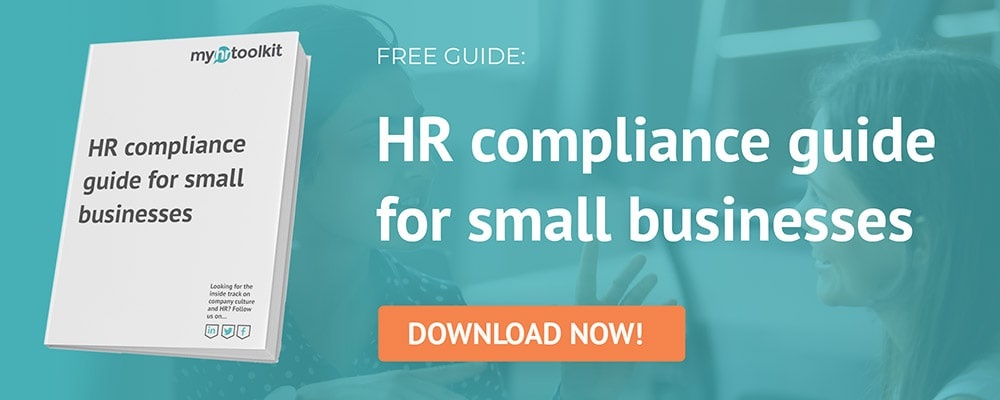How should you conduct disciplinary procedures with employees to ensure they are fair? Kate Marchant, HR consultant and founder of Running HR Ltd, offers her tips on following a fair disciplinary procedure in HRM, whether informally or formally.
What is a disciplinary procedure?
A disciplinary procedure is a clear process enabling employers to address issues of misconduct that might be committed by employees during the course of their employment. It sets a framework to operate within to ensure that there is consistency of treatment, yet also allows for individual and mitigating circumstances to be addressed and considered.
Why have a disciplinary procedure?
A disciplinary procedure allows an employer to:
- Inform an employee that their behaviour is unacceptable or inappropriate
- Resolve concerns constructively and encourage improvement
- Impose sanctions according to the seriousness of the misconduct
- Follow a fair process and be in the best position to successfully defend any unfair dismissal claim
Remember the ACAS code!
ACAS has a code of conduct that sets out the minimum best practice process employers should follow when taking disciplinary action. Whilst it is not unlawful to choose not to follow the ACAS code, compliance with it will be reviewed in any unfair dismissal case and compensation awards are often adjusted in the favour of the employee if the employer has not followed the ACAS code.
What does a disciplinary procedure look like?
Many employers will have their own procedure that allows for both informal and formal processes.
Informal process
This usually involves a meeting with the employee where any concerns are raised and discussed. The outcome may be to issue a ‘letter of concern’ to confirm what was discussed and the improvements required.
A key message to employers in addressing issues of misconduct is: Do Not Delay! It is imperative to keep written records of any informal discussion – a diary note can often suffice.
Related article: Documenting employee discipline: how to document misconduct and employee issues
Using an informal process can often address the issues and get some kind of improvement. Misconduct that is left unchecked can often escalate to the point when the employer or manager can’t take any more, gets frustrated and wants to move to dismissal. In most cases, this would be an unfair response, as no attempt has been made to alert the employee about the type of misconduct the employer is experiencing. It is really important that issues are nipped in the bud so there is no snowball effect.
The formal disciplinary process
A formal disciplinary process usually involves a number of stages:
- Investigation (including consideration of suspension)
- Invite to disciplinary hearing
- Disciplinary hearing
- Disciplinary outcome
- Appeal process
Let’s consider each stage in more detail:
Investigation

When there is an allegation of misconduct, an investigation will usually follow (although not in all cases and your procedures should allow for this). The investigation is the fact-finding part of the formal process. It is important that any investigation is fair and balanced – it should not be purely focused on proving the employee’s guilt. The objective of any investigation is to decide, on the balance of probabilities, whether there is a case to answer. Consider who should carry out the investigation - they need to be impartial.
In some cases, it will be appropriate to suspend the employee, on full pay, whilst the investigation is being carried out. It is important not to have a knee jerk reaction when thinking about whether to suspend – it is not always appropriate. Suspension is normally appropriate if there is a threat to the business or the employee or a belief the employee may interfere with the investigation. Suspension is not a punitive measure nor is it an indication of an employee’s guilt, so it should always be with pay.
Invite to disciplinary hearing

Ensure the formulation of the allegation is done correctly; consider including a more generic allegation (e.g. a breakdown in trust and confidence), as you may not have enough to support a specific allegation but the employee’s behaviour/actions may have been such to cause a breakdown in trust, which an employer may feel goes to the root of the contract and justifies a dismissal (or other sanction).
The invite should also advise of the potential outcome of the meeting. If it is potential gross misconduct (very serious issues of misconduct such as assault, theft, fraud, and gross negligence) then it needs to be stated that an outcome could be summary dismissal i.e. a dismissal without notice.
The invite needs to provide the employee with adequate notice of the hearing, so they can fully prepare their case. It should also provide them with copies of all documentation and information to be used at the hearing. The right to be accompanied also needs to be explained and, ideally, you should request confirmation of attendance from the employee.
Store and retrieve all the disciplinary documentation and notes you need securely and rapidly with HR document management software.
The disciplinary hearing

It is important that the hearing has structure and that attendees and their roles are explained. Explain how the hearing will be conducted (including representation rights) and consider whether notes will be taken. If the hearing is being conducted online via Zoom or similar, you do have the option to record the meeting, but ensure all parties agree to this if it is to be recorded.
Check whether there are any additional or mitigating circumstances to be considered. Always have an adjournment to consider the final decision and outcome.
The disciplinary outcome

The decision to be made is whether or not any disciplinary action is justified. Refer to the hearing invite when making a decision, as you shouldn’t impose a sanction that is more severe than the one outlined in the invite.
The potential outcomes and actions available include:
- No action (but could include alternatives such as training, coaching, or counselling for example)
- Verbal warning (less popular these days as confirming the verbal warning in writing often leads to confusion as to its status)
- 1st written warning
- Final written warning
- Dismissal with notice
- Summary dismissal (appropriate for gross misconduct)
The disciplinary outcome should be confirmed in writing, as well as how long any warning will last. It is important to set out the standards of future behaviour and conduct expected, potential consequences if there is no improvement, and whether there will be any reviews before the warning expires (this is useful to do). It is also essential that the right of appeal is contained and what the employee needs to do if they wish to exercise this right.
The appeal

The employee should be encouraged to provide the reasons for their appeal in writing. When this is received, an appeal hearing should be set up in a timely manner and it is important that any appeal is heard by an impartial Chair who has not previously been involved in the disciplinary or investigation process.
The potential outcomes of the appeal will be to either overturn the previous decision taken at the disciplinary hearing or to dismiss the appeal and confirm the original decision. The appeal outcome is the final part of the internal process.
Read more from our blog
How to discipline employees who are late – and whether you should

Written by Kate Marchant
Kate Marchant is an experienced HR professional and CIPD Associate Member who offers straight talking HR solutions for SMEs with friendly and jargon free advice through her consultancy Running HR Ltd.


 Holiday Planner
Holiday Planner Absence Management
Absence Management Performance Management
Performance Management Staff Management
Staff Management Document Management
Document Management Reporting
Reporting Health and Safety Management
Health and Safety Management Task Management
Task Management Security Centre
Security Centre Self Service
Self Service Mobile
Mobile





